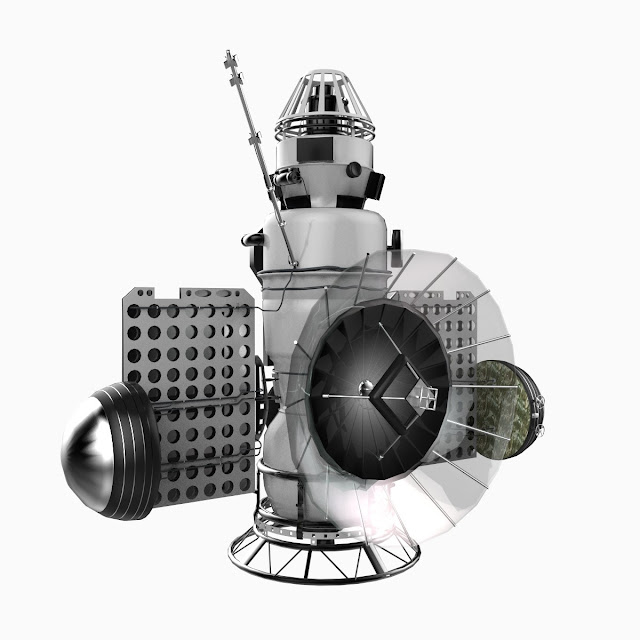Note:- Hello everybody, Welcome to the Series of Spacecraft. In this series,Spacecrafts are going to be covered.
THE ZOND (meaning 'probe') program was series of unmanned spacecraft launched between 1964 and 1970 by the Soviet Union.
It was the third Zond probe to begin the journey to Mars, Zond 1 and 2 were both lost after only a few weeks.
Although Zond 3 launched successfully, and is depicted here near Mars, it could not complete its mission because it missed the launched window.
Instead it was directed to perform a flyby of the Moon and took 25 pictures of the Far Side, Following this, it was subsequently sent on a trajectory that took it through the orbit of Mars, it was still transmitting when it passed Mars orbit, proving that the Soviets were capable of building and launching an interplanetary mission.
THE ZOND (meaning 'probe') program was series of unmanned spacecraft launched between 1964 and 1970 by the Soviet Union.
 |
| Zond 3 |
 |
| Zond 3 |
 |
| Soviet Space Camera |
The vehicle was based on the 3MV design, which stood for '3rd generation Mars-Venus' intended for interplanetary exploration.
It consist of three sections, at the centre of which was a pressurised bay called Orbital Compartment. This simulated Earth surface pressure and temperature, protecting the electronic housed within from the extreme conditions of space.
A high-gain communications antenna and a pair of Solar Panels were mounted either side of the Orbital Compartment. Attached to the solar panel were two large, hemispherical radiators, designed to dump waste heat from the Orbital Compartment.
A second pressurised bay was attached to the base of the Orbital Compartment, called the Planetary Compartment. The equipment housed in this section could be changed to suit mission objectives, including detaching for a planetary landing.
Finally, propulsion was provided by an engine mounted at the top of the Orbital Compartment. This section also featured cold gas rockets for attitude control.
One of the interesting features of this, and other Soviet spacecraft of the time, was that some had cameras that used photographic film. To be able to send the pictures back to Earth, they had on-board film-processing equipment. Once the negatives were developed, they were electronically, scanned and converted into a form that could be transmitted back to Earth.
Zond 3 is depicted near Mars, the destination it could not achieve.
No comments:
Post a Comment
Let me know guys what you think about this.